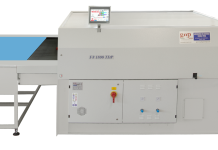
Cutting-edge digital design tools will help garment manufacturers cut costs by millions of dollars, increase throughput, reduce waste, and – most importantly – stay competitive in the age of “fast fashion.” That’s the message Gerber Technology delivered at the 2017 Texprocess tradeshow. Though lagging a bit compared to other industries, the fashion industry is on the verge of a huge digital technology revolution. Today, everyone in the industry – from major players to small startup labels – is talking about the industry’s digital transformation and how it can revolutionize the way garments are designed, created, and purchased.
The shift is driven by a more tech-savvy customer base, a faster “fast fashion” cycle, and the need to solve massive inventory and returns issues. Today, as fashion cycles get shorter and more customers buy online, companies are getting crushed by having the wrong inventory and customer returns. Now, with advances in technology especially for flexible materials, companies are turning to digital technologies to solve these problems. Gerber, globally present company, has made it a priority to ensure that its technology solutions are within reach of anyone who wants them. At this year’s Texprocess, Gerber showcased its Digital Solutions including the newest releases of YuniquePLM® product lifecycle management software, as well as AccuMark® the industry-leading pattern design, grading, marker making and production planning software, AccuMark 3D and AccuPlan™. Since Gerber’s Digital Solutions architecture uses common file structures, data can easily be passed to the cut room, where smart machines, like the GERBERspreader™ XLs series and Gerber Paragon® line of multi-ply GERBERcutters®, can process the order with a simple barcode scan. A closed-loop, end-to-end Digital Solution like Gerber’s, that integrates software and smart machines, allows companies to automate their entire process and streamline data and workflow necessary to provide insight, maximize throughput, minimize errors and reduce labor costs to be competitive in mass production environments.




